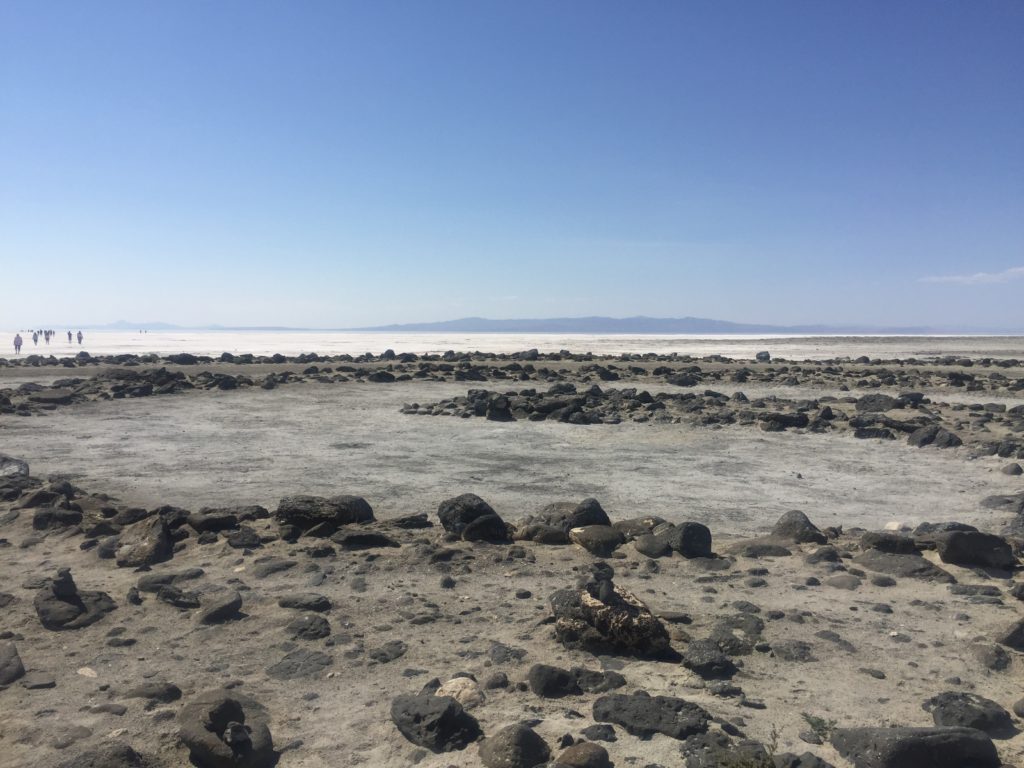Spiral Jetty: Making the Trek to the Famed Utah Earthwork
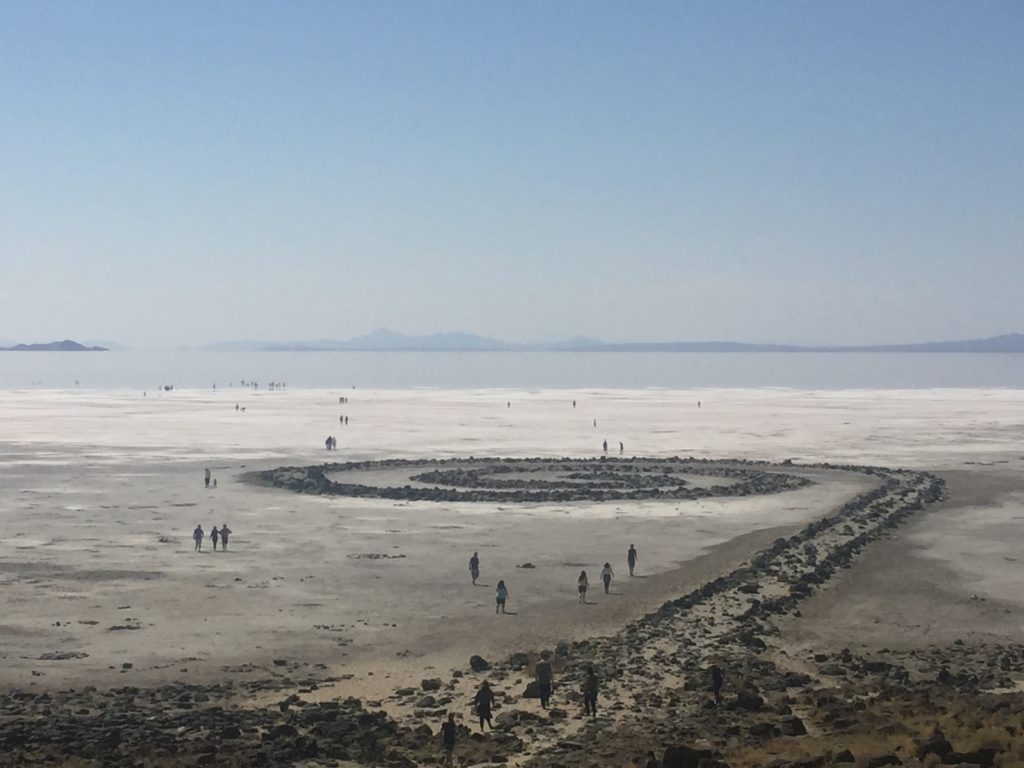
Seventeen miles down a gravel road that cuts through an empty expanse of desert to reach the northeastern edge of Utah’s Great Salt Lake is an enigmatic art destination that’s worth the pilgrimage. And pilgrimage it is. Robert Smithson’s environmental artwork, Spiral Jetty, is not someplace you happen upon. The 48-year-old “earthwork” requires a two-hour trek from Salt Lake City. Despite the obscurity of its location and its transformation over time, the 1,500-foot-long coil of black rock retains its powerful and mysterious draw.
Created in 1970 by Smithson and a professional crew who used a dump truck, tractor, and front-end loader, the sculpture is made up of 6,000 tons of earth and basalt rock, evidence of the volcanoes that once erupted nearby. Smithson created it when the water levels were low. Two years later, the earth sculpture was submerged and remained that way, invisible, until drought caused the water level to recede in 2002.
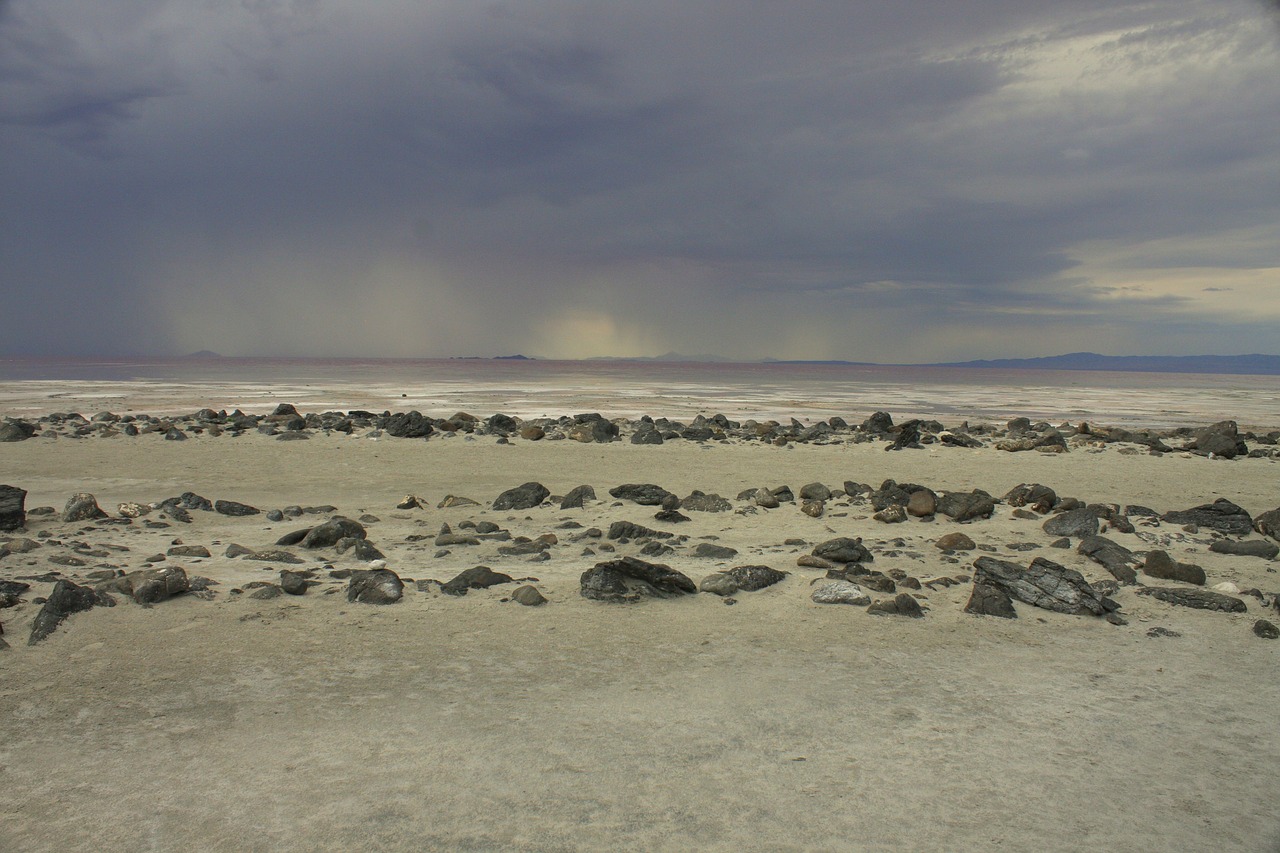
Though he is identified with the Land Art movement, Smithson, born in 1938 in New Jersey, began his career in New York City, where he focused on painting and collage and was influenced by Pop Art. Toward the end of his career, as his interest in the Minimalist movement grew, he focused on creating sculptures, particularly, “earthworks.” He died at 35, in a plane crash while working on a piece in Texas, “Amarillo Ramp.”
The Trek to Spiral Jetty
Under a clear blue September sky, with temperatures in the high ‘80s, I drove with my two sisters north of Salt Lake City, stopping for lunch in Ogden, which has a downtown lined with historic buildings. We’d spent Labor Day weekend together, hiking and bicycling near Provo, but saved our final day to visit Spiral Jetty. At Brigham City, we left the highway and headed west on Route 15, through the tiny town of Corrine, still an hour away, but the last place for gas or food.
The road took us along the bare Promontory Mountains, which stretched low across the skyline, covered in rocks and brush. When the road dipped to cross several marsh complexes, we spotted a couple of great blue herons and a brown duck or two, as muted in color as the landscape.
The paved road ended at the Golden Spike National Historic Site, which marks the spot where the Transcontinental Railroad was completed in 1869, when workers joined the Union and the Central Pacific Railroads. Two colorful, old-fashioned locomotives, replicas of the originals, steamed across a stretch of tracks, a demonstration run that is one of the site’s attractions. This is also the last stop for bathrooms or water before continuing to Spiral Jetty.
Beyond the ranger station, our rental car turned up a cloud of dust as we followed the signs pointing us to the jetty. The empty landscape, was punctuated in a few places by cattle grates and fences, though no cattle.
When we finally arrived at Rozel Point Peninsula, Spiral Jetty’s setting, the parking lot was nearly full with about 30 cars. A healthy crowd of couples and families had fanned out across the sculpture and the salt flats surrounding it. We picked our way through the rocks and brush down a small hill to the artwork, which the deeply receded waters had left essentially beached. As we walked the counter clock-wise spiral, which is 15 feet across, is felt smaller than I’d expected and we arrived at its center quickly.
The Artwork’s Meaning
Smithson said he wanted to invoke the prehistoric in the site and it’s on this level that the piece most connects for me. It has an affinity with the mysterious stone circles of England and Ireland as well as Native American effigy mounds, whose raised piles of earth, like the Serpent Mounds in Ohio, are shaped like animals, humans or symbols.
Like those land works, which have survived thousands of years but remain a mystery, the meaning of Smithson’s work is also a bit enigmatic. Though Smithson wrote about it and made a film, he never gave a definitive explanation for what the sculpture means or what it’s shape is intended to convey.
The Dia Art Foundation, which now owns and caretakes the work, says that he, “envisioned an artwork in a state of constant transformation whose form is never fixed and undergoes decay from the moment of its creation.”
Smithson was interested in both science and science fiction, and Dia says the spiral shape of the work, “alludes to the molecular lattice of the salt-crystal deposits found throughout the lake’s expanse.”
In the movie he made about Spiral Jetty, Smithson quotes from a science fiction novel on time travel. The perspective of the spiral also alludes to science fiction. The flatness of the land makes it hard to see as you walk it, so the best view is from above—giving the artwork a connection to the celestial.
As I looked at it, I also realized that its spiral shape resembles a backward question mark—perhaps playing on the uncertainty of its meaning.
Spiral Jetty’s Setting
Almost equally interesting, was Spiral Jetty’s surroundings. As a result of a long-standing drought, the lake had receded hundreds of feet from the sculpture. When we visited, a thick carpet of salt sat between it and the water’s edge, made up in places of crystal-like clumps.
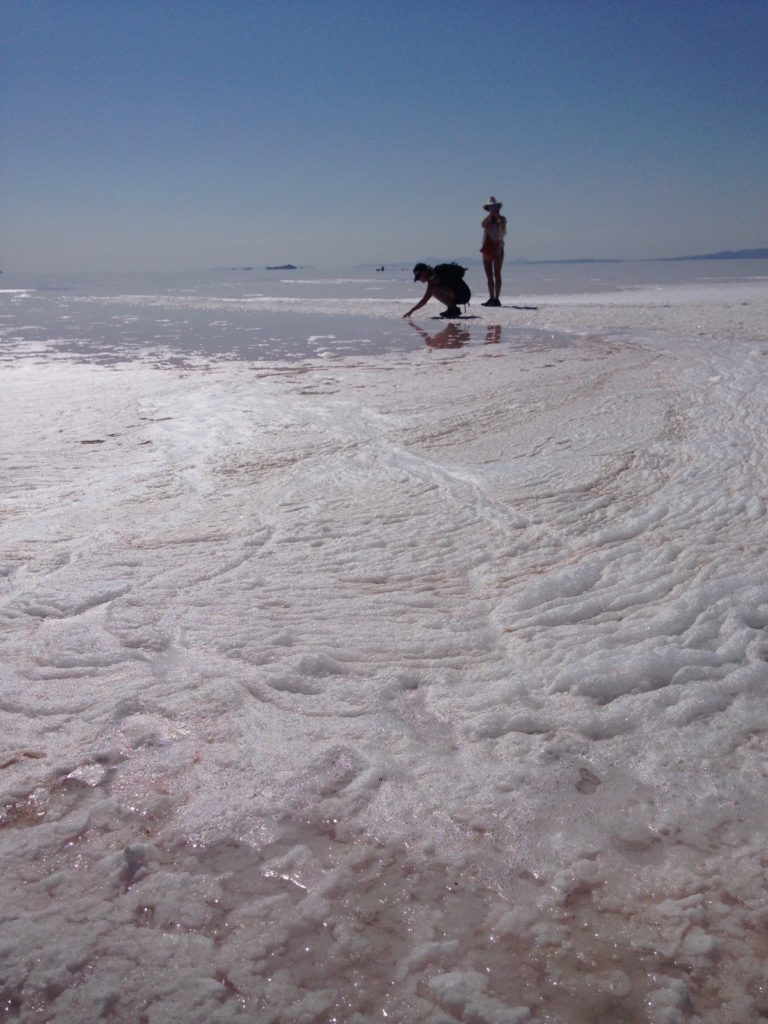
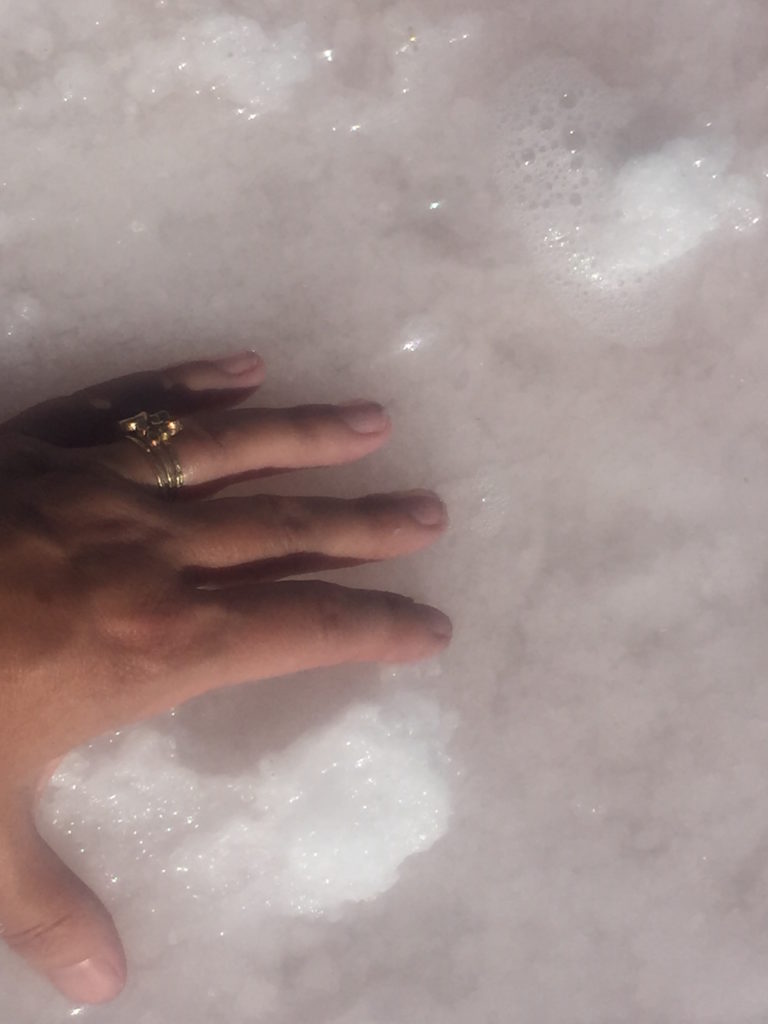
Pools of pink water, colored that way by microbes, punctured the salt beds, which crunched like compacted snow as we walked to the lake’s shore. A handful of people rolled up their pants and waded into the lake and one person paddled an inflatable boat in the shallow water. Touching the water left a slippery feeling on my fingers.
The mid-afternoon heat, rising off the lake, made the islands in the distance shimmer in a hazy gray. A white pelican, standing at least three feet high, watched us from a distance. The birds, which can reach 70 inches in length, feast on the brine shrimp in the lake and nest on the islands.
The View from Above
After exploring the Spiral Jetty and its setting, my sisters and I trooped up the hillside above the parking lot for a better vantage. A small plaque on a podium, an Eagle Scout project from 2014, commemorates and explains the artwork. The view looks over the parking lot and includes the cars, the only other intrusion on the surrounding natural area. Ironically, when Smithson first built the Spiral Jetty, it was on the site of an abandoned oil drilling operation and detritus from that was among the features in the landscape.
Smithson’s estate donated Spiral Jetty to The Dia Foundation in 1999 and since 2012, the organization has documented its changes twice a year, through aerial photography. While Spiral Jetty has changed in the decades since Smithson made it, its durability also suggests that it will remain an intriguing destination for years to come. Intrepid visitors can contemplate the snail-shaped coil, set in the desolate desert and ponder life’s changes as well.

Book a Stay near Salt Lake City, Utah
Search, compare and book hotels & rentals at the best prices that are sourced from a variety of platforms including Booking.com, Hotels.com, Expedia, Vrbo, and more. You can move the map to search for accommodations in other areas and also use the filter to find restaurants, purchase tickets for tours and attractions, and locate interesting points of interest!


Eliza Amon has worked as a journalist for nearly 20 years with articles published in The New York Times, Harper’s Magazine and Bloomberg News among others. Eliza is the Editor for World Footprints and currently lives in Seattle where she is thrilled to have the opportunity to discover new adventures in the Pacific Northwest.
